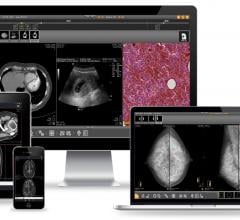April 22, 2008 - Tumor metastasis is caused by cancer cells that exploit a small number of master control genes, according to research delivered by the keynote speaker, Robert Weinberg, M.D., Whitehead Institute for Biomedical Research, Cambridge, MA, at the opening of the International Conference on 'Invasion and Metastasis' in Berlin, Germany.
"The process of tumor metastasis has until recently been one of bewildering complexity. However, one can now begin to rationalize this complex process in terms of a relatively small number of master control genes which normally operate during normal development and which are appropriated and exploited by cancer cells," Dr. Weinberg said.
The reason for this is the discovery of transcription factors in the last few years. Transcription factors are proteins that turn genes on and off and can act to program many of the traits of highly malignant cells, as described by Dr. Weinberg, who is also a Professor at the Massachusetts Institute of Technology (MIT).
In 2007, almost 560,000 Americans and more than 1,8 million Europeans died of cancer, according to the American Cancer Society. "The vast majority (90 percent) of these patients were struck down by metastases, cancer cells that have disseminated and colonized in organs far from the primary tumor," Dr. Weinberg pointed out. "Only ten percent of cancer patients die of their primary tumors."
The majority of life-threatening cancers about 80 percent, occur in epithelial tissue. But what exactly enables cancer cells to leave the primary tumor and travel by the body's highways - the blood and the lymphatic vessels,as Dr. Weinberg put it, to seek new sites where they may found new colonies, is still uncertain.
Recent research suggests that a drastic alteration of the primary cancer cells (called epithelial- mesenchymal transition or EMT) plays a crucial role in this complex biological process. "The EMT involves a profound change in the biological phenotype of cells in which they shed their epithelial traits together with their gene expression pattern and acquire mesenchymal ones instead," Dr. Weinberg explained.
Special epithelial markers, like E-cadherin and beta-Catenin, are depressed. These markers normally keep the epithelial cells tightly together. The mesenchymal state frees these cells to move about and to invade other tissues, and also makes them resistant to apoptosis, programmed cell death. "This pathological process is strikingly similar to the EMT normally occurring during embryogenesis and wound healing," said Dr. Weinberg.
EMT is an important program, which enables carcinoma cells to become mobile and invasive. "Nonetheless, it is still unclear whether EMT underlies the malignant behavior of all carcinoma cells or whether alternative programs are activated to enable metastatic dissemination," Dr. Weinberg said.
For more information: http://www.wi.mit.edu/research/faculty/weinberg.html


 November 04, 2021
November 04, 2021 








